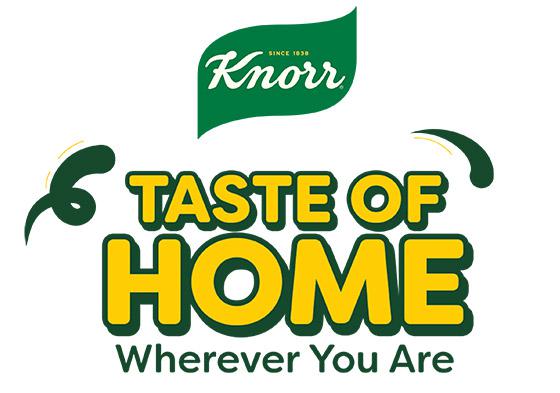
MediaPost: Educate us a little bit on how the Knorr product mix is composed, and especially how it
relates to a range of Asian American, and Asian Canadian food cultures.
Lan Trieu:
Knorr is the number two largest brand in Unilever. We have a presence in 90 markets at about 400 million households. And the US and Canada are a global destination of the diaspora consumer, Latinos,
Asian, Muslim consumers. Our mix in different countries is very localized. Knorr product was designed based on the top dish in each country. For example, in Mexico the red rice and tomato noodle soup
are the top dishes. We design Knorr products to support, to enhance the flavor of those top dishes. In Vietnam or in China, soup is number one top dish, so our product was designed to enhance the
flavor of soup. So that's why the portfolio of Knorr in each different market is very different from each other. And many consumers think Knorr is a local brand until they come to US and say, oh, you
sell Knorr here, I thought it was an Indian brand, I thought Knorr was a Filipino brand that's how Knorr has grown in a local community. And we are 150 years old.
advertisement
advertisement
MP: At the center of this most recent, what you call
the ‘Taste of Home’ campaign is mural painting. Explain what these murals are, who's making them and where they'll be. And then I want to talk about the ways in which you're using
them.
Trieu: ‘Taste of Home’ is a very intangible concept. We
wanted to make it tangible so we can see that through art. We identified three artists that represent the top diaspora within the Asian community. So, we work with Tania, she’s Chinese Canadian.
We work with Amira, she’s Filipino American, and Faith, she’s Chinese, Vietnamese, and American. They all have a rich history with Knorr products from their family, from their mom to
grandma. They're very proud of their cultural identity, and they always do that as a main topic of their art. We asked them to develop a Taste of Home story through their personal lens, and we were
really happy about what came out. So, Amira gave us a picture of her mom cooking sinigang. Faith showed us a picture of her childhood dish coming from her grandma. And Tania gave us an image that
you’d see on a Lunar New Year, that’s celebrated with dumplings. We have one mural in Brooklyn, and we have one mural in Denver.

MP: How are you amplifying these physical installations for a larger
audience?
Trieu: So, the outdoor location will be the starting point of the
campaign, and we feature a documentary behind the artists when they are doing the art, and also, they’re telling the life story through the art. We interviewed them at their home. We’re
going to have a docuseries to feature through digital media, and the story is featured on our Facebook and Instagram ‘Cook with Knorr.’ We also have the website Cook with
Knorr.
We are doing targeted marketing. And today in social media, because of privacy concerns, it's not easy to identify who's
Chinese, who’s Filipino. We have to really identify our own affinity, try to find out who that person is, what they’re interested in. And it’s a long process that takes a lot of
learning for us and with the media agency as well, because this was the first time that they got an assignment like that. So, identifying Asian American who’s interested in food and who consumes
content that's in Chinese, Vietnamese, Filipino.
MP: Tell us a little bit
about how the media mix was here, and whether you found that you really could find this audience mainly through social channels, or you were using other media?
Trieu: Yeah, so that had to be a mix of media, it cannot be only on social media. Social media as we
define it, the role of the channel is for engagement. So, if the content is engaging, they stay with us.
We also use programmatic targeting
through the Google network for awareness, where we do media banners. We work with our distributors, also the in-store POS in the Asian stores, because that's where you clearly see the consumer as well
as partnerships with influencers. There are so many influencers out there who have already established their audience.

MP: And it sounds like this through line here from the murals to the merchandise is tangibility. You started out by saying that the Taste
of Home is a very general topic, and you needed to make it concrete. And then, somehow, all of these various elements do that. And is that something that simply is important for all multicultural
marketing, or is this mix especially important for these communities that you're trying to reach?
Trieu:
If you do a survey with Asian-Americans, they feel like brands are not talking to them, and they feel like they’re an afterthought for many brands and many businesses.
They value the brands that treat them for who they are. So, for us, when we do the new art, or we do the merchandise, we not just talk about our product, but separate the culture and put the Asian
culture on the forefront. This is part of who we are, and that gives the Asian consumer that pride and excitement because they're not seeing those kinds of art, or those kinds of activities happen on
a lot of brands. If you see in the US, a lot of brands have started talking to Hispanic consumers, Latino, but that has not happened yet for other minorities, like Asian.
MP: Talk about Unilever International's larger program is diaspora marketing. You're part of a group that is trying to find these emigree
niches around the world and bring food from home messaging to them. How is this group organized? Different from other aspects of Knorr and Unilever?
Trieu: It's a fascinating story as well. International group was born in 2012. It's just a group of
supply chain people. Originally, the mission was just trying to fill the capacity of the factory. So, let’s export more products outside, so we increase the capacity. And throughout the world
they realized what they do is much bigger than the capacity was filling. So that group started in India. And Indian diaspora is everywhere, all over the world.
What they do is really give that diaspora something that they need, really underserved consumers. So, the group expanded to be a big business today with 400
employees. The bigger pillar is an underserved diaspora consumer in Europe, North America, Australia and even Dubai and Singapore.
The second pillar is underserved regions. Unilever is a big company, we're in many countries, but we are not in Mongolia, East Timor, and a lot of African and
Caribbean markets. Through the network of distributors, we actually get the products to faraway places that are not reached by the official individual trucks.
The third pillar is business, professional channels like hotels, hospitals. We even sell to prisons in the US.

MP: Tell us how you're organized. I think you used the metaphor that Unilever is the
truck, and you guys are the scooters. How so, and how do you find emigree groups to go after and actually reach those groups effectively?
Trieu: Our headquarters is Singapore. We have offices in the US, Canada, Dubai, Europe,
Mexico, and India as well. Actually, it's quite obvious where we find consumers, given we can easily pull out the data for each country. In the US, for example, there are about 90 million immigrant
consumers, or second-generation, who consume the food from 14 different countries. We identify country by country, and we do a mapping portfolio. For example, Knorr, we are the leading brand in 26
markets. And we see among that, we have Mexico, we have Philippines, we have China, and we have Nigeria, Ethiopia. And how does that map to this market? One layer is the diaspora, another layer is the
market where our products are strong and we’re matching them. In the US and Canada, we launch the products that are best sellers in those home countries here, and the priority for us is the top
diaspora like Asian, Mexican. And we also have portfolio for the halal as well as kosher consumer.
MP: That sounds like a massive data challenge to do all of that. But then, once you find those groups, you've decided the products that
really are best targeted to that group. How do you then meet the media challenge of finding the best way to reach that group?
Trieu: Our team is very lean and small, and in order to operate on the multiple diasporas, multiple markets in a cost-effective way, we
keep a very lean team. We lean a lot on technology and digital. For example, our team, we don't do a lot of traditional media, but we do mainly digital media, and we utilize our agency in Singapore,
so they can help us leverage media all over the world so we can leverage the cost and the expertise.
The data is quite available in every
way, it's not that hard to find. We just need to do that prioritization. Right now, within Unilever, we have a system where we can tie in any zip code, and you can see within that zip code, who are
the people from this diaspora, what’s the percentage of each generation, and how many stores are nearby.
And we can use that data to
target the store, the media, the sampling activity. And it's actually all available in a lot of the existing database. The AI, the one to sell retail data, already has some of that data available, and
we have some tools with our data. We just combine monthly data and put it together into that hub.